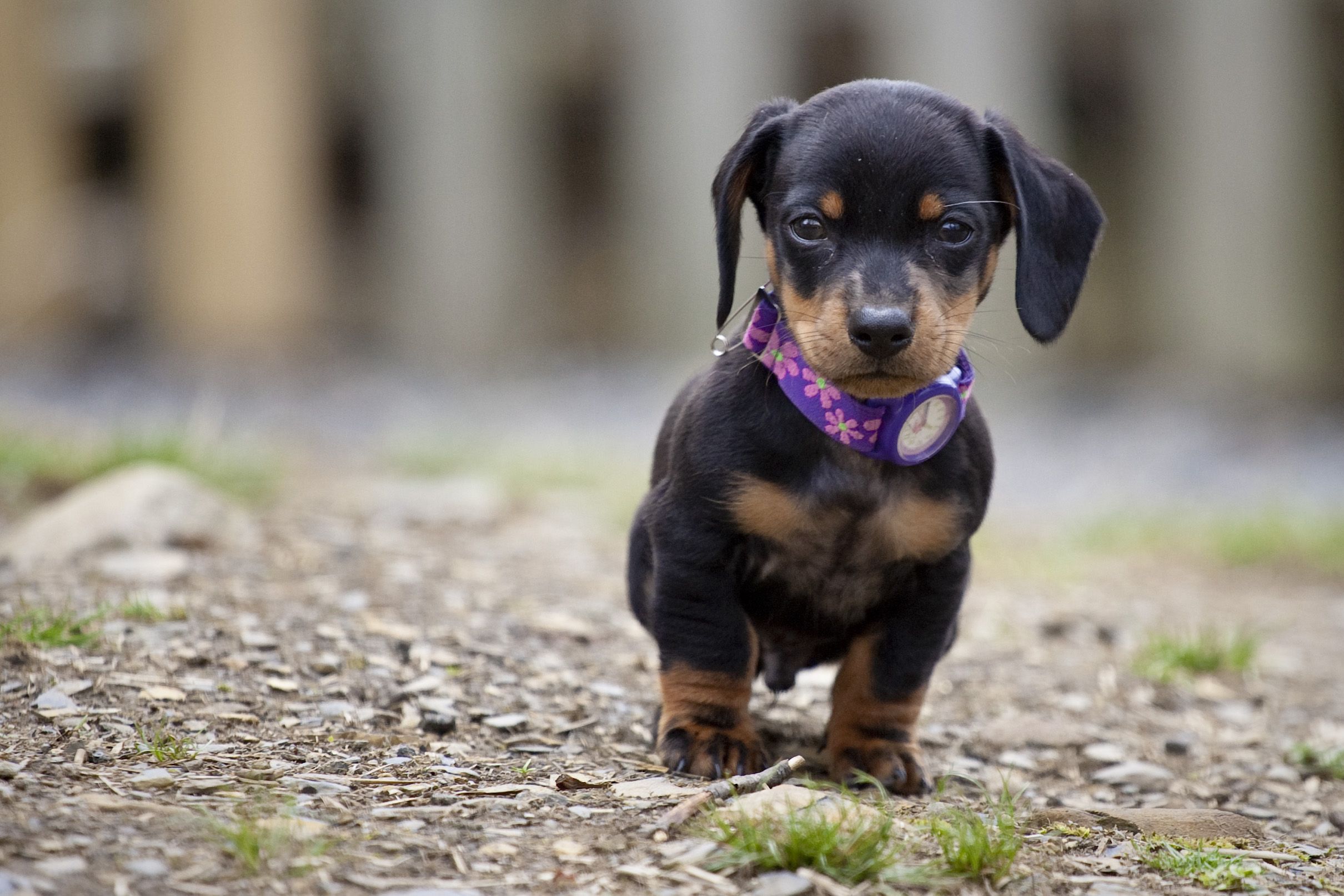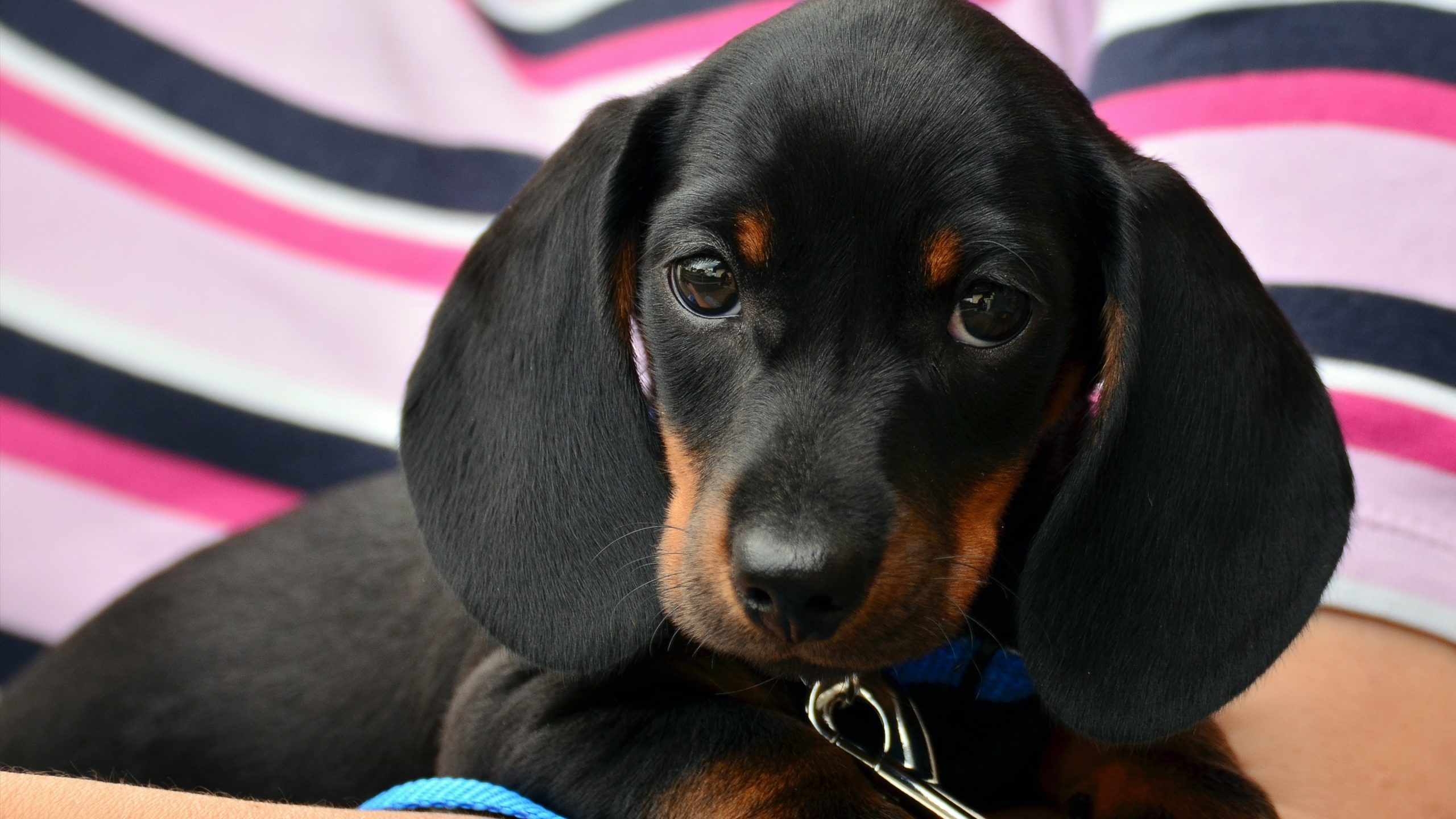The dachshund, affectionately known as the “wiener dog” or “sausage dog,” is one of the most recognizable breeds in the world. With their elongated bodies, short legs, and bold personalities, these small hounds pack enormous character into a compact package.

Origins and Purpose
Dachshunds were originally bred in Germany over 300 years ago to hunt badgers—their name literally translates to “badger dog” in German. Their unique body shape was specifically designed to dig into burrows and pursue prey underground. This hunting heritage explains much about their temperament today: they’re brave, determined, and surprisingly athletic despite their comical proportions.
Physical Characteristics
Dachshunds come in three coat varieties: smooth (short-haired), long-haired, and wire-haired. They also come in two sizes: standard (typically 16-32 pounds) and miniature (11 pounds or under). Their coloring varies widely, including red, black and tan, chocolate, cream, and dappled patterns.
Their most distinctive feature is their long spine and short legs, which requires special care considerations. This body structure makes them prone to intervertebral disc disease (IVDD), a serious spinal condition.
Personality Traits
Dachshunds are known for their:
Bold and fearless nature – They often behave as though they’re much larger than they actually are, sometimes challenging dogs many times their size.
Strong-willed independence – That hunting background means they can be stubborn and determined, which makes training require patience and consistency.
Loyalty and affection – They bond deeply with their families and can be quite cuddly, often burrowing under blankets to sleep.
Vocal tendencies – Dachshunds have surprisingly loud, deep barks for their size and won’t hesitate to use them to alert you to visitors or perceived threats.
Playfulness – Despite their small size, they have plenty of energy and love interactive games.
Care Essentials

Exercise Needs
Dachshunds need moderate daily exercise—typically 30-60 minutes of walking or play. However, their exercise routine requires special considerations. Avoid activities that strain their backs, such as jumping from heights, running up and down stairs frequently, or standing on hind legs. Use ramps to help them get on and off furniture safely.
Diet and Weight Management
Maintaining a healthy weight is critical for dachshunds. Excess weight puts tremendous strain on their long spine, increasing the risk of back problems. Feed them high-quality dog food in measured portions, and be cautious with treats. Many dachshunds are food-motivated and will happily overeat if given the chance.
Grooming
Grooming needs vary by coat type. Smooth-coated dachshunds need minimal grooming—just occasional brushing and baths. Long-haired varieties require regular brushing several times a week to prevent tangles. Wire-haired dachshunds need hand-stripping or clipping a few times a year to maintain their coat texture.
All dachshunds need regular nail trims, dental care, and ear cleaning, especially the long-eared varieties prone to ear infections.
Training and Socialization
Start training early with positive reinforcement methods. Dachshunds can be stubborn, so consistency and patience are essential. They respond well to treats and praise but may ignore commands they find unreasonable.
Early socialization is important to prevent them from becoming overly suspicious of strangers or aggressive toward other dogs. Their hunting instinct means they may chase smaller animals, so recall training is important if you plan to let them off-leash.
Housetraining can be challenging with dachshunds, so crate training and a consistent schedule are helpful.
Health Considerations
Beyond IVDD, dachshunds may be prone to:
- Obesity
- Dental disease
- Progressive retinal atrophy
- Epilepsy
- Cushing’s disease
Regular veterinary checkups are essential. Watch for signs of back problems, including reluctance to move, yelping when touched, weakness in the hind legs, or changes in posture.
Living with a Dachshund
Dachshunds adapt well to various living situations, from apartments to houses with yards. They’re generally good with children who know how to handle them gently, though their backs are vulnerable to rough play. They can coexist with other pets if properly socialized, though their prey drive may make them chase cats or small animals.
These dogs thrive on companionship and don’t like being left alone for long periods. They may develop separation anxiety or destructive behaviors if lonely.

Is a Dachshund Right for You?
Dachshunds make wonderful companions for people who appreciate their spirited personality and can commit to their special needs. They’re ideal for those who want a small dog with a big personality, enjoy interactive play, and can provide consistent training and back-protective care.
However, they may not be the best choice if you want a dog that’s easy to train, need a quiet breed, or aren’t prepared to manage potential health issues, particularly spinal problems.
With proper care, attention, and lots of love, a dachshund can be an entertaining, affectionate, and loyal companion for 12-16 years. Their unique combination of courage, comedy, and cuddles makes them unforgettable members of the family.